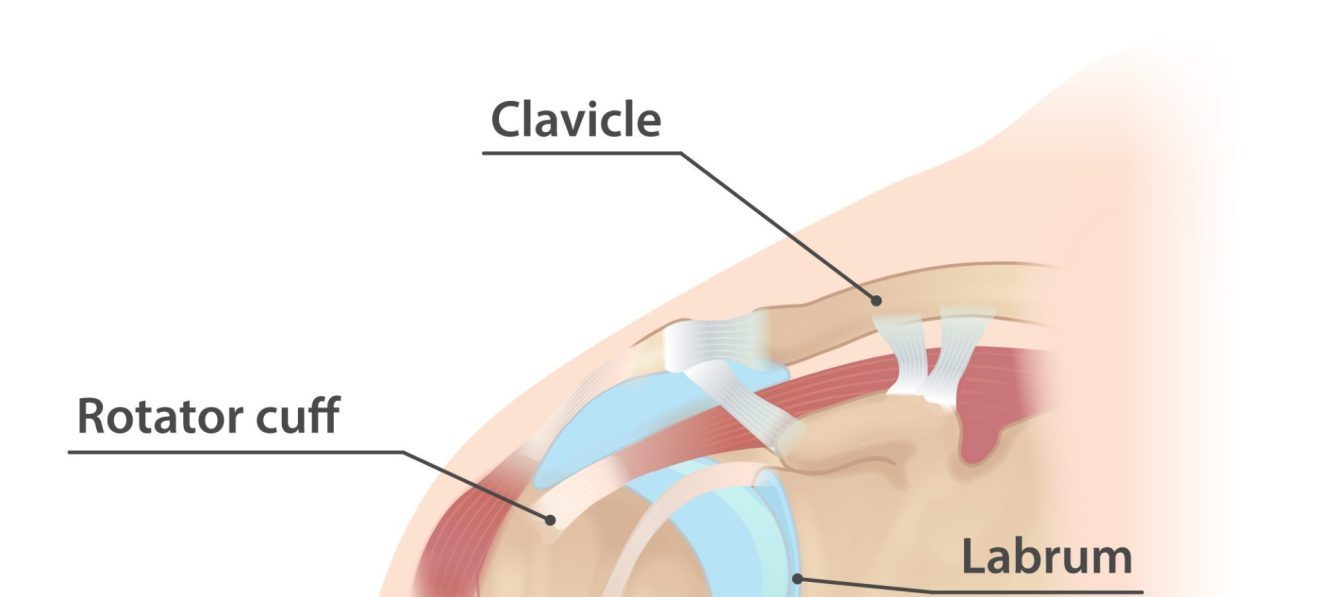AC joint injury, also known as acromioclavicular joint injury, is a common shoulder injury that affects the joint where the clavicle (collarbone) meets the acromion process of the scapula (shoulder blade). This injury can range from a mild sprain (Type 1 and 2) to a complete separation of the joint (Type 3, 4, 5), depending on the severity of the trauma.
Physiotherapy plays a crucial role in the management and rehabilitation of low grade AC joint injuries, and post surgery in higher grade AC joint injury. Physiotherapy management focuses on helping individuals regain shoulder function, reduce pain, and restore stability. By following the 5 stages of rehab, individuals with AC joint injuries can achieve optimal recovery and return to their daily activities.
- Pain and symptom management: The initial stage of rehab focuses on pain relief and managing symptoms associated with AC joint injuries. Physiotherapists may employ techniques such as manual therapy, joint mobilizations, ice and heat therapy, or gentle exercises to reduce pain and inflammation in the affected area. They also may recommend activity modification and the use of supportive devices, such as slings or braces, to provide stability and protect the joint.
- Range of motion: Once pain is under control, the next stage involves restoring and improving the range of motion in the shoulder joint. Physiotherapy exercises may include stretching techniques to increase flexibility and mobility in the shoulder.Such passive and active range of motion exercises help to restore the full range of motion in the shoulder joint and prevent stiffness.
- Motor control: Stage 3 of rehab focuses on improving neuromuscular control and stability around the AC joint. Physiotherapists design exercises that target the muscles surrounding the shoulder, including the rotator cuff muscles, deltoids, and scapular stabilizers. These exercises aim to improve muscle strength, control, and coordination to provide stability to the AC joint.
- Strengthening: In stage 4, the emphasis is on strengthening the muscles surrounding the AC joint to provide support and stability. Physiotherapy exercises may include resistance training using bands, weights, or bodyweight to target the rotator cuff muscles, deltoids, and scapular stabilizers. Strengthening these muscles helps to improve joint stability, reduce stress on the AC joint, and restore optimal shoulder function.
- Maintenance: The final stage of rehab focuses on maintaining the gains achieved in the previous stages and minimising the recurrence of symptoms. Individuals are encouraged to continue with a tailored exercise program that includes a combination of range of motion exercises, strengthening exercises, and functional movements. Physiotherapists provide guidance on proper movement patterns, posture, and modifications for daily activities and sports to prevent overloading the AC joint and to maintain shoulder health in the long term.
Following an AC joint injury, return-to-sport or functional activities are gradually introduced based on individual progress and physical readiness to re-engage in such activities.
It’s important to note that the management of AC joint injuries should be tailored to the specific needs and goals of each individual. Physiotherapists at Range Physio will work closely with their patients to develop personalized treatment plans, monitor progress, and provide education and guidance throughout the rehabilitation process. By addressing pain, improving range of motion, enhancing motor control, and strengthening the shoulder muscles, physiotherapy can effectively manage AC joint injuries and help individuals regain pain-free shoulder function and stability.
For more information regarding AC joint injuries please visit:


